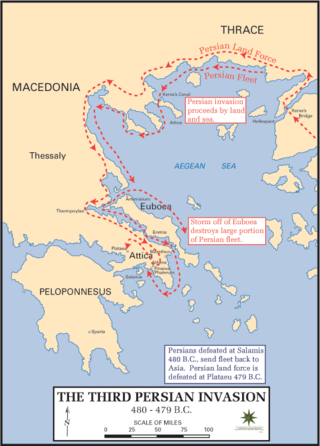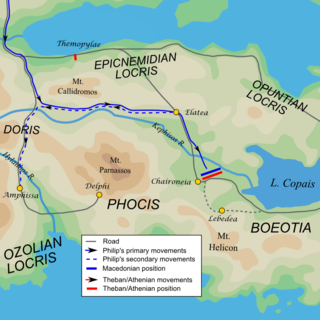
Year 323 BC was a year of the pre-Julian Roman calendar. At the time, it was known as the Year of the Consulship of Longus and Cerretanus. The denomination 323 BC for this year has been used since the early medieval period, when the Anno Domini calendar era became the prevalent method in Europe for naming years.
Year 341 BC was a year of the pre-Julian Roman calendar. At the time it was known as the Year of the Consulship of Venno and Privernas. The denomination 341 BC for this year has been used since the early medieval period, when the Anno Domini calendar era became the prevalent method in Europe for naming years.
Year 347 BC was a year of the pre-Julian Roman calendar. At the time it was known in Rome as the Year of the Consulship of Venno and Torquatus. The denomination 347 BC for this year has been used since the early medieval period, when the Anno Domini calendar era became the prevalent method in Europe for naming years.
This article concerns the period 349 BC – 340 BC.

Template:Reimprove
This article concerns the period 389 BC – 380 BC.
This article concerns the period 369 BC – 360 BC
This article concerns the period 359 BC – 350 BC.
This article concerns the period 339 BC – 330 BC.

This article concerns the period 329 BC – 320 BC.

This is a timeline of ancient Greece from its emergence around 800 BC to its subjection to the Roman Empire in 146 BC.

Year 338 BC was a year of the pre-Julian Roman calendar. At the time it was known as the Year of the Consulship of Camillus and Maenius. The denomination 338 BC for this year has been used since the early medieval period, when the Anno Domini calendar era became the prevalent method in Europe for naming years.
Year 424 BC was a year of the pre-Julian Roman calendar. At the time, it was known as the Year of the Tribunate of Crassus, Fidenas, Rutilus and Iullus. The denomination 424 BC for this year has been used since the early medieval period when the Anno Domini calendar era became the prevalent method in Europe for naming years.
Year 356 BC was a year of the pre-Julian Roman calendar. At the time, it was known as the Year of the Consulship of Ambustus and Laenas. The denomination 356 BC for this year has been used since the early medieval period, when the Anno Domini calendar era became the prevalent method in Europe for naming years.
Year 367 BC was a year of the pre-Julian Roman calendar. At the time, it was known as the Year of the Tribunate of Cossus, Maluginensis, Macerinus, Capitolinus, Cicurinus and Poplicola. The denomination 367 BC for this year has been used since the early medieval period, when the Anno Domini calendar era became the prevalent method in Europe for naming years.

Perdiccas II was the king of Macedonia from 454 BC until his death in 413 BC. During the Peloponnesian War, he frequently switched sides between Sparta and Athens.

Chalkidiki, also known as Chalcidice, is a peninsula and regional unit of Greece, part of the region of Central Macedonia, in the geographic region of Macedonia in Northern Greece. The autonomous Mount Athos region constitutes the easternmost part of the peninsula, but not of the regional unit.

Stagira, Stagirus, or Stageira was an ancient Greek city located near the eastern coast of the peninsula of Chalkidice, which is now part of the Greek province of Central Macedonia. It is chiefly known for being the birthplace of Aristotle, the Greek philosopher and polymath, student of Plato, and teacher of Alexander the Great. The ruins of the city lie approximately 8 kilometres (5.0 mi) north northeast of the present-day village of Stagira, close to the town of Olympiada.
Charidemus, of Oreus in Euboea, was an ancient Greek mercenary leader of the 4th century BC. He had a complicated relationship with Athens, sometimes aiding the city in its efforts to secure its interests in the northern Aegean, sometimes working against it. He was castigated by Demosthenes in his oration Against Aristocrates for repeated treacherous actions toward Athens, yet later he received Athenian citizenship and was elected one of its generals. In this capacity he ran afoul of Alexander III of Macedon and was ordered into banishment after the destruction of Thebes in 335 BC. He retired to Persia, where he was first honored by the Great King, but was later executed after sneering at the quality of the Persian army.

The kingdom of Macedonia was an ancient state in what is now the Macedonian region of northern Greece, founded in the mid-7th century BC during the period of Archaic Greece and lasting until the mid-2nd century BC. Led first by the Argead dynasty of kings, Macedonia became a vassal state of the Achaemenid Empire of ancient Persia during the reigns of Amyntas I of Macedon and his son Alexander I of Macedon. The period of Achaemenid Macedonia came to an end in roughly 479 BC with the ultimate Greek victory against the second Persian invasion of Greece led by Xerxes I and the withdrawal of Persian forces from the European mainland.








